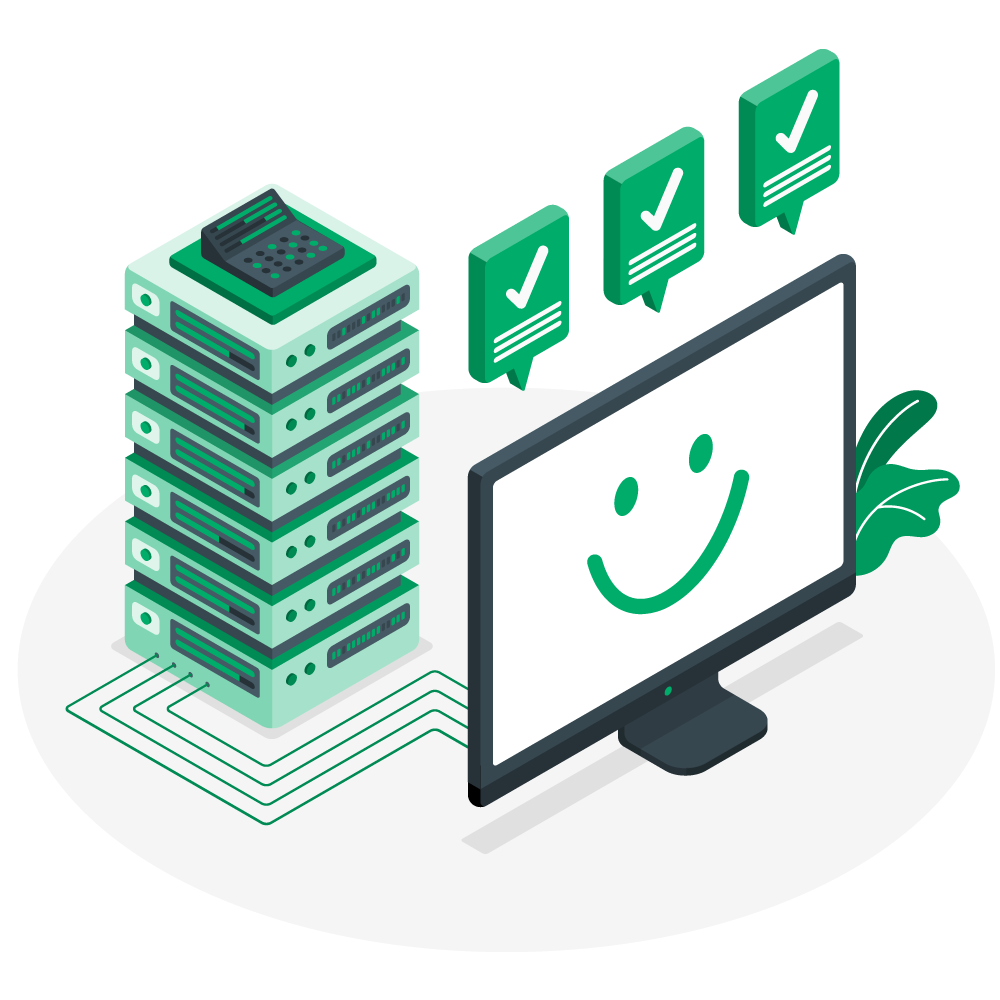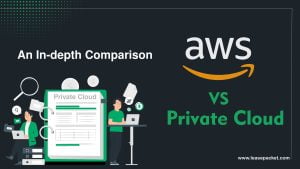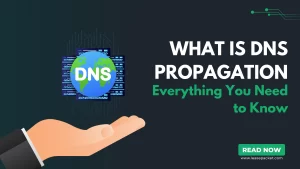When you run a Binance node, it can get you good rewards. Not only it gives you technological learning but also helps contribute to the Binance blockchain’s stability and efficiency. Whether you are a developer, a tech enthusiast, or an investor looking to increase your engagement with the blockchain ecosystem, setting up a Binance node is a step in the right direction. In this blog, we will discuss the process of setting up a Binance node, covering the prerequisites, the setup process, and some key operational insights. Let’s get started.
Table of Contents
Understanding Binance Nodes
In the blockchain network, a node refers to a computer that connects to the blockchain network and supports it by validating and relaying transactions. Nodes are critical for the decentralization and security of the network.
Binance Smart Chain (BSC) is a blockchain network built for running smart contract-based applications. The process to run a Binance node involves participating in this network either as a validator or as a full node.
- Validator Nodes: These nodes are responsible for producing new blocks in the blockchain. They participate in consensus and governance decisions, requiring significant commitment and investment in terms of hardware and BNB tokens for staking.
- Full Nodes: These nodes maintain a full copy of the blockchain and serve the network by relaying transactions and blocks to other nodes, but they do not participate in the consensus process.
We will focus on setting up a full node, which is more accessible for most users and does not require staking BNB tokens.
Prerequisites to Run a Binance Node
Hardware Requirements:
- CPU: Minimum dual-core processor, but a quad-core or better is recommended.
- Memory: At least 8GB of RAM, with 16GB preferred.
- Storage: Minimum 500GB of SSD to ensure fast read/write speeds. 1TB or more is recommended for longer-term considerations.
- Stable, high-speed internet connection.
Software Requirements:
- Operating System: Ubuntu (16.04 or later) or macOS.
- Geth: Software used to download, compile, and run the blockchain.
- Basic Technical Skills: Familiarity with command-line interface (CLI) operations, basic networking, and general computer maintenance.
Steps to run a Binance Node
Step 1: Preparing Your Environment
- Set up your server: Prepare a dedicated computer or a virtual private server (VPS) that meets the hardware specifications.
- Install Dependencies: Update your package manager and install required software like build-essential, curl, git, etc.
sudo apt update && sudo apt upgrade -y
sudo apt install -y build-essential curl git
Step 2: Install Geth
Geth is the official Go implementation of the Binance protocol. It’s used to interact with the Binance blockchain, offering tools to create transactions, manage accounts, and more.
- Clone the Geth repository from GitHub.
- Build Geth from the source code.
git clone -b master https://github.com/binance-chain/bsc
cd bsc
make geth
Step 3: Initialize the Binance Node
- Download the genesis JSON file from the official Binance repository.
- Initialize your node with the genesis file.
wget https://github.com/binance-chain/bsc/releases/download/v1.1.0-beta/mainnet.zip
unzip mainnet.zip
./build/bin/geth –datadir node init genesis.json
Step 4: Start the Node
- Run the node using Geth.
./build/bin/geth –config ./config.toml –datadir ./node –syncmode ‘fast’
- Monitor the logs to ensure your node is syncing with the Binance blockchain.
Maintaining and Monitoring Your Node
- Regular Updates: Keep your node software and server operating system up to date to avoid security vulnerabilities.
- Monitoring Tools: Use tools like Grafana or Prometheus to monitor your node’s performance and health.
- Security Practices: Implement firewall rules, secure SSH access, and other security best practices to protect your node.
Conclusion
The process to run a Binance node will help you understand blockchain and cryptocurrencies deeply. While it requires initial technical setup and ongoing maintenance, the benefits of increased network familiarity, potential direct blockchain queries, and supporting the Binance ecosystem are some good reasons to take this project. Remember, the stability and security of the node are the most important things, so regular updates and active monitoring are necessary for anyone serious to run a Binance node in the right way.
FAQ
Q.1 What is a Binance Smart Chain node?
A Binance Smart Chain node is a software instance that connects to the BSC network, participates in transmitting transactions, and keeps a copy of the blockchain. It helps maintain the network’s operation by validating and relaying transactions and, depending on the configuration, can also propose new blocks if set up as a validator node.
Q.2 What are the hardware requirements to run a BSC node?
To run a BSC node effectively, you should have a computer or server with at least a dual-core processor (quad-core recommended), 16GB of RAM, and 1TB of SSD storage. These specifications ensure that the node can handle the significant amount of data processed and the high-speed read/write operations needed for the blockchain.
Q.3 Can I run a BSC node on a personal computer?
Yes, you can run a BSC node on a personal computer as long as it meets the minimum hardware requirements. However, for optimal performance and reliability, it is recommended to use a dedicated server or a high-specification virtual private server (VPS), especially if you are considering becoming a validator.
Q.4 Do I need to stake BNB to run a BSC node?
Staking BNB is not required to run a full node on the Binance Smart Chain, which participates in the network by relaying transactions and keeping a full copy of the blockchain. However, if you wish to become a validator and actively participate in the block creation process, staking BNB is necessary to qualify and participate in the consensus process.
Q.5 How do I install and set up a BSC node?
Setting up a BSC node involves several steps, starting with setting up an appropriate server, installing dependencies, and then installing the Geth software. Geth is the Go implementation of the BSC protocol. After installing Geth, you initialize the node with the BSC genesis file and then start the node using the appropriate command, ensuring it syncs with the current state of the blockchain.
Q.6 What is Geth, and why is it necessary for running a BSC node?
Geth stands for Go Ethereum and is a command-line interface tool that allows users to interact with the Ethereum blockchain, which Binance Smart Chain is compatible with due to its EVM compatibility. Geth is necessary for running a BSC node as it includes all necessary software to download, build, and run the node software, manage accounts, and interact with the blockchain.
Q.7 How do I ensure my BSC node is secure?
Securing a BSC node involves several best practices, such as keeping the server’s operating system up-to-date, securing SSH access with key-based authentication and disabling root login, configuring a firewall to limit unnecessary network exposure, and regularly backing up important data.
Q.8 How do I update my BSC node?
To update your BSC node, you will typically need to pull the latest changes from the BSC GitHub repository, rebuild the Geth application, and restart your node. It is important to follow the official BSC release notes for any additional instructions specific to the update.
Q.9 What are the benefits of running a BSC node?
Running a BSC node contributes to the decentralization and security of the network. For node operators, benefits include the ability to directly interact with the blockchain, execute and relay transactions without depending on third-party services, and for validators, the potential to earn transaction fees and block rewards
Q.10 How can I monitor the performance of my BSC node?
Monitoring a BSC node can be effectively managed through various tools and services such as Grafana, Prometheus, or other third-party monitoring solutions that can track and visualize metrics like CPU usage, memory use, disk I/O, and network activity. Setting up alerts for abnormal behaviors is also crucial to maintaining node health and performance.

























